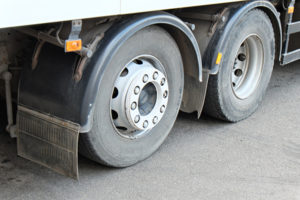Filling up with hydrogen
FAU-based scientist publishes feasibility study of carbon dioxide-free heavy goods road transport
It will probably always be necessary to transport new machine parts, trainers and cured meats from A to B – at least for the foreseeable future. Goods transport plays an important role in the industrialised nation that is Germany. In this country, more than two-thirds of all goods are transported by HGVs, giving rise to approximately 40 million tonnes of carbon dioxide emissions each year. One of the objectives being pursued as a result of the energy transition in Germany – in addition to reducing energy consumption as a whole and increasing the use of renewable energies – is to ensure that these emission levels are lowered. Unless Germany makes changes to its heavy goods transport system it will not be able to meet its climate targets and for this reason scientists at Friedrich-Alexander-Universität Erlangen-Nürnberg (FAU) are looking whether and how it might be possible to make the system virtually CO2 footprint-neutral.
Although overall energy consumption in Germany has declined since 1990, the proportion of this energy used by road traffic is increasing annually.This has risen by 68 terawatt hours (TWh) since 1990, reaching 728 TWh in 2014 when it accounted for about a quarter of total energy consumption. This is more than all the electrical power generated in Germany in one year. The core aims of the energy transition are to reduce energy consumption and carbon dioxide emissions and increase the proportion of renewables used for energy production and it is with the objective of attaining these goals that Prof. Dr. Wolfgang Arlt, holder of the Chair of Thermal Process Engineering at FAU, has undertaken a feasibility study on behalf of the Federal Ministry of Transport (BMVI). The purpose of the study is to find ways of making heavy goods road transport climate neutral.
A special hydrogen storage system
Considered in the study is a potential energy source that would provide for carbon-neutral vehicle transport in the future and would itself be eco-friendly to obtain. This energy source is hydrogen; though not in its gaseous state, but in chemically bound form in liquid organic hydrogen carriers (LOHC). LOHCs consist of a carrier liquid to which hydrogen can be easily bound. A special device is employed to release the hydrogen from the carrier fluid, after which it can be either used as fuel in an internal combustion engine or converted into usable electric power in fuel cells. However, once used, the carrier liquid can be recycled and used again to bind hydrogen. Since LOHCs are not only easy to store but also relatively simple to use (the liquid behaves similarly to diesel), only a few changes to filling stations would be necessary, such as the installation of special pumps and nozzles, which would make the fuel available to car drivers too. If HGV transport does come to be based on the use of LOHCs in the future, an added benefit would be that the infrastructure could also be used by private cars.
Combustion engine or fuel cell?
Although both options are low-emission, an internal combustion engine would be more advantageous in connection with the use of LOHCs. For example, the heat generated by a combustion engine can be easily diverted and reused for splitting the hydrogen from the LOHC. The study also highlights the fact that the necessary hydrogen can also be obtained by climate-friendly means. However, more regenerative processing plants need to be built, and more rapidly, to generate the climate-friendly energy needed to produce the hydrogen. Another option would be to import hydrogen-rich LOHCs from other countries such as Canada or North Africa.
Germany has some catching up to do
According to Professor Arlt, since it is the cost of new technologies that has often prevented their adoption, legal regulations would have to be changed and an incentive system created for the start-up phase to ensure that the already narrow profit margins of the transport industry would be protected. ‘We also still do not have a prototype vehicle for road testing,’ adds Arlt. ‘Unfortunately, as China already has buses with this kind of engine, Germany has some catching up to do.’The FAU-based researcher therefore intends to join forces with the business partners who participated in the study in order to apply for funding to build and test a prototype.
A helpful side effect of LOHCs is that they remove nitrogen oxide from exhaust gases. This is also something that makes use of LOHCs seem more promising than the use of other concepts such as AdBlue, a urea-water mixture that can be used to reduce nitrogen oxide concentrations in diesel exhaust emissions. ‘In the laboratory, levels of nitrogen oxide were actually reduced below the detection limit in the presence of LOHC,’ concludes Arlt. This is far lower than the current required minimum threshold.
The text of the feasibility study can be downloaded from: www.tvt.cbi.fau.de
Further information:
Prof. Dr. Wolfgang Arlt
Phone: +49 9131 85 27440 wolfgang.arlt@fau.de
